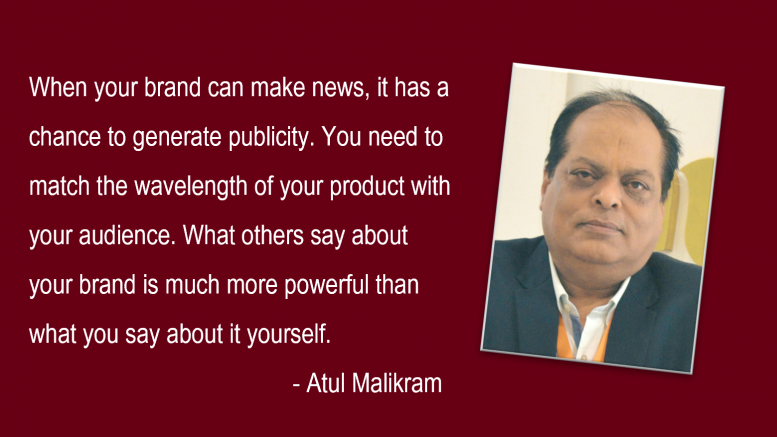Publicity laws can be difficult to understand, but I’ll do my best to break it down for you.
Publicity builds brands…..
Most people get confused between publicity and advertising. But when you start playing the fields and start working on growing your brand, you’ll notice that PR and advertising are vastly different.
Delivering your message to a world served by increasingly specialized media catering to audience niches is a challenge to any company’s budget. In such a scenario, Publicity can be a cost-effective alternative to advertising and more impactful in many ways.
Advertising or PR: The ultimate battle
To say simply, advertising is a paid promotion. Even people with little or no marketing knowledge know that it is you who is saying all those ‘nice’ things about your company and product. They are always skeptical of ads. While the Publicity or PR is all about spreading your information and messages through third parties. They may take different channels- newspapers, radios, social media, blogs, etc. to shape the perception of your brand in the market. The brand-building becomes top-notch when journalists feature your brand in a glowing way.
“Publicity is far less controllable and takes more time to work than advertising, but has long-lasting credibility. If I read it, it must be true.”
Shahnaz Husain started her salon in 1977, converting her home into a clinic. As she started formulating her own Ayurveda products, ‘Shahnaz Herbal Inc’ came into existence. Today, now and then, we are bombarded with the commercials for numerous beauty products, but unlike the others, Shahnaz feels that the ‘quality’ of her products is the only thing she needs. Today, she has succeeded in establishing a solid brand with more than 350 products in her portfolio, purely with the magic of word-of-mouth.
Who can forget the extremely delicious taste of Naturals Ice-cream? Naturals don’t spend a hill of beans on advertising either. Like Shahnaz, they too feel that word of mouth around their mouth-watering ice-creams is enough for them. Today, Natural Ice Cream has grown into 135 outlets in various cities. It recorded a retail turnover of Rs 300 crore in the financial year 2020 and was named as India’s Top 10 brand for customer experience in a KPMG survey.
Zara is a major name in the world of apparel and their first store opened in 1975. Starting in 2016, they boasted 2000 stores around the world. What makes them unique is that they don’t spend much on advertising – less than 0.3% of their sales!
Compare the top 5 brands on Interbrand’s list versus the Ad Age top 5 advertisers. Even though the top 5 advertisers spend billions annually to support their brands, no company or product is among the top 5 brands. Coca-Cola (#32 top advertiser) is the only member of the brand list to also be among the top 100 in advertising. Google does very little advertising but is frequently featured in business magazines and the general press, which carry tremendous credibility. The same is true for Apple, Starbucks, and Ikea, who are also relatively light on advertising but heavy proponents of PR.
In the past, it may have been true that a hefty advertising budget was the key ingredient in the brand-building process. But what worked in the past doesn’t necessarily work today. Today companies need brand-building to obtain a favorable outcome. A new brand must be capable of generating favorable publicity in the media, or it won’t have a chance to stay in the marketplace.
Now the question arrives, how do you generate publicity?
You cannot get publicity served on a platter. The best way to generate publicity is by being the ‘favorite’ of your audience.
It’s been said that the needs of audiences have changed drastically over the last 10 years. As a result, brands can no longer produce content focusing solely on the wants and needs of generations gone by. Brands today need to focus their attention on those who are consuming their content today – audiences with different expectations from before.
The news media wants to talk about what’s new, what’s first, and what’s hot, not trending. When your brand can make news, it has a chance to generate publicity. You need to match the wavelength of your product with your audience. What others say about your brand is much more powerful than what you say about it yourself. That’s why publicity, in general, is more effective than advertising. And why, over the past two decades, publicity has eclipsed advertising as the most effective force in branding.
The audience not only wants to know about your brand, but they also want to know your values and beliefs. Engaging with the audience on an emotional and psychic level is trending. Today, social media is one of the top engagement platforms for brands to reach out to a wider range of audiences.
Take the example of Zomato. Zomato has become a synonym for online food delivery today.
It understands that most of its target groups are active social media users. So, it focuses on creating social media ads and creates engaging posts to connect with the audience. Understandably, 0.73% of the traffic of Zomato’s come from social media. It understands what kind of posts will engage the users; hence it follows the meme marketing strategy for its social media creating funny content that amuses the audience, and at the same time, tempts them to order food. Even Zomato’s Instagram bio says, “Meme page…occasionally posting brand posts due to business team pressure.”
Even the “utterly butterly” delicious Amul never fails to voice its opinion on the trending matters of the national or international issues and deliver it in its signature cartoon format.
Some companies develop their branding strategies as if advertising were their primary communications vehicle. This is a wrong move. The strategy should be developed first from a publicity point of view. A brand needs PR to gain credibility. Sales increase because people put their trust in you. Therefore, next time, think carefully about what path is right for your brand and goals to dominate the market.
The views and opinions published here belong to the author and do not necessarily reflect the views and opinions of the publisher.



Be the first to comment on "Understanding the Law of Publicity"